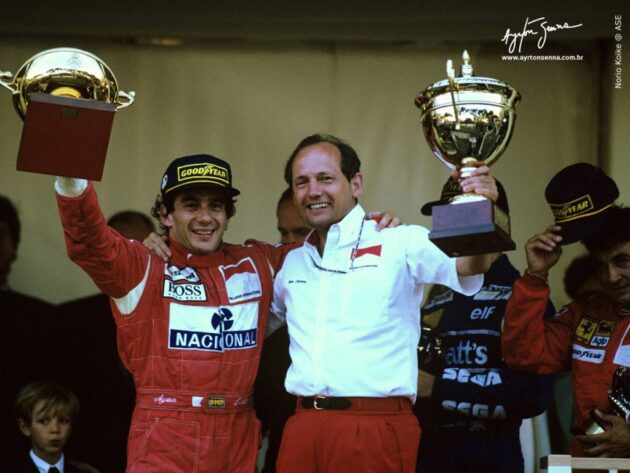It is practically impossible to talk about Monaco and not remember Ayrton Senna’s achievements. The three-time Formula 1 world champion holds records that, even now, over 30 years later, remain unbroken.
However, Senna’s relationship with the Monte Carlo street circuit goes beyond his six victories, eight podiums, and five pole positions in just ten GPs raced on the track.
It was in the Principality that Senna carried some of his greatest career stories, some of which turned him into a legend in F1 and shed light on aspects of the driver’s personality such as determination, leadership, resilience, and pursuit of perfection to win.
Stories like the ones below prompt McLaren, Formula 1, and all fans to pay incredible tributes, as we are witnessing during the 30-year legacy of Ayrton Senna.
1984 – first podium and controversy
Ayrton Senna’s debut in the Principality was only his fifth race in F1 history, yet the driver showcased his talent by taking Toleman to the podium with a second-place finish. Starting from 13th position, Ayrton delivered a masterclass in the rain, executing remarkable overtakes, including one on Niki Lauda, then a McLaren driver.
Although victory eluded him due to a controversial interruption just as he was about to overtake Alain Prost and take the lead, the best was yet to come.

1987 – first win and princely shower
After securing his first pole in Monaco in 1985 and a second podium in 1986, Senna clinched his maiden victory in 1987 when, once again, he was far from being the favorite.
Nigel Mansell had claimed pole position, leading the race comfortably until lap 29 when the Briton encountered problems with his Williams. Senna then dominated the next 49 laps with his iconic yellow Lotus, celebrating with such gusto that he broke protocol during the podium ceremony, even drenching Prince Rainier with champagne.
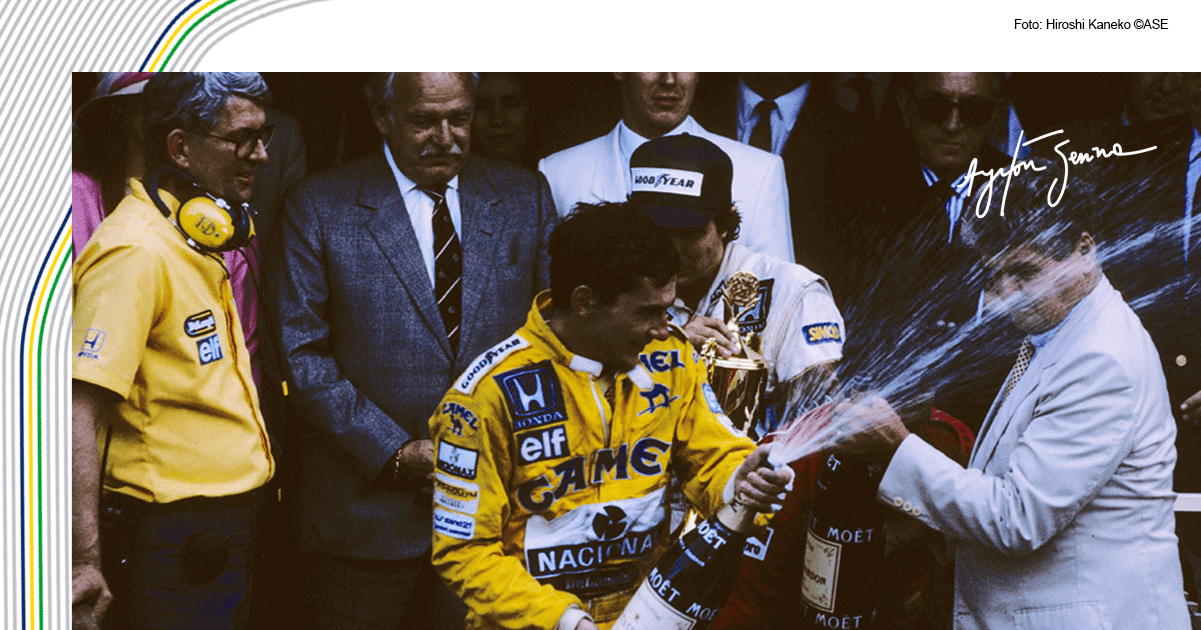

1988 – driving in another dimension and and the victory that was not achieved
The 1988 Monaco GP was marked by two significant stories: Ayrton Senna secured pole position with a 1.4-second advantage over his teammate Alain Prost. The Brazilian himself described that lap as an experience of driving in another dimension.
With expectations of a Senna procession on Sunday, everything seemed on track until, at the Portier corner, Ayrton made what many consider his career’s biggest mistake: with over 50 seconds ahead of Prost, Senna crashed into the guardrail and walked away from his car, retiring from the race. Nonetheless, he went on to claim his first world title later that year, with this race serving as a learning experience for the remainder of his career.


1989 – Reconciliation with Monaco
Rarely in sports does one manage to bounce back in the same place after a setback, but Ayrton achieved just that in 1989. This time, already with the first world title under his belt, Senna once again outpaced Prost by over 1 second in qualifying and left no chance for his competitors.
Senna crossed the finish line 52 seconds ahead of the Frenchman, securing his second victory in the Principality. He even revealed after the race that he had lost the first and second gears during the event. It was merely a warm-up for what we would witness at the 1991 Brazilian GP.
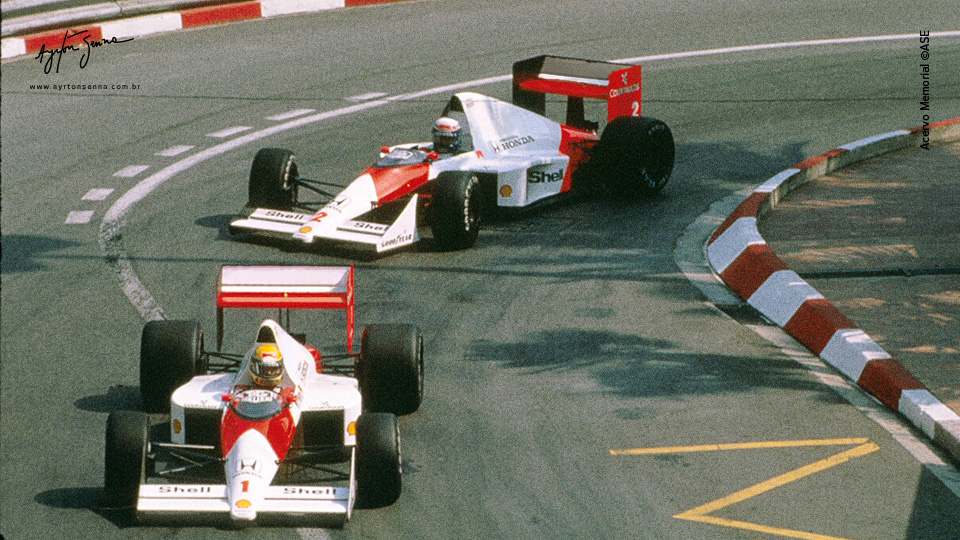

1990 – Grand Chelem
Winning in F1 is already a feat; however, securing pole position, leading from start to finish, setting the fastest lap in the same race, especially in Monaco, sets a different standard. Senna accomplished this in 1990, the year he would be crowned as a double world champion.
Again with McLaren, Senna maintained a solid pace throughout the race, despite needing to preserve his car, mainly due to an engine noise issue, and crossed the finish line with just 1.087 seconds ahead of Jean Alesi from Tyrrell.
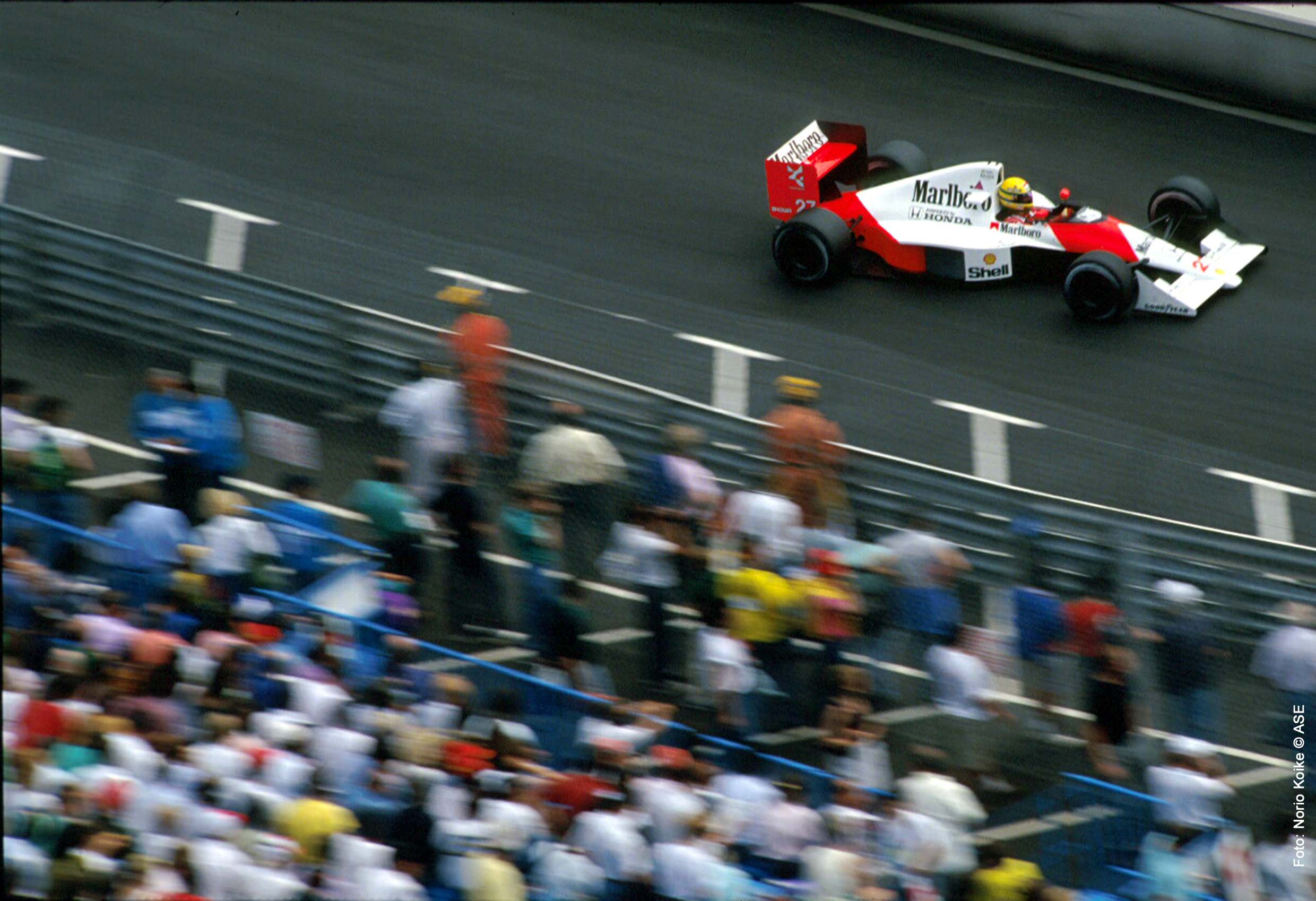

1991 – Victory with the spare car
Senna’s fourth Monaco win began with a tale of resilience from both the Brazilian and McLaren. After claiming his fifth pole in Monaco, Senna faced issues during the warm-up before the race, requiring the team to prepare the spare car for him to compete.
The race unfolded perfectly for Ayrton, once again dominating from start to finish. The triumph was a gift for his mother, Dona Neyde, as it was Mother’s Day, making Ayrton’s 30th F1 victory even more special.
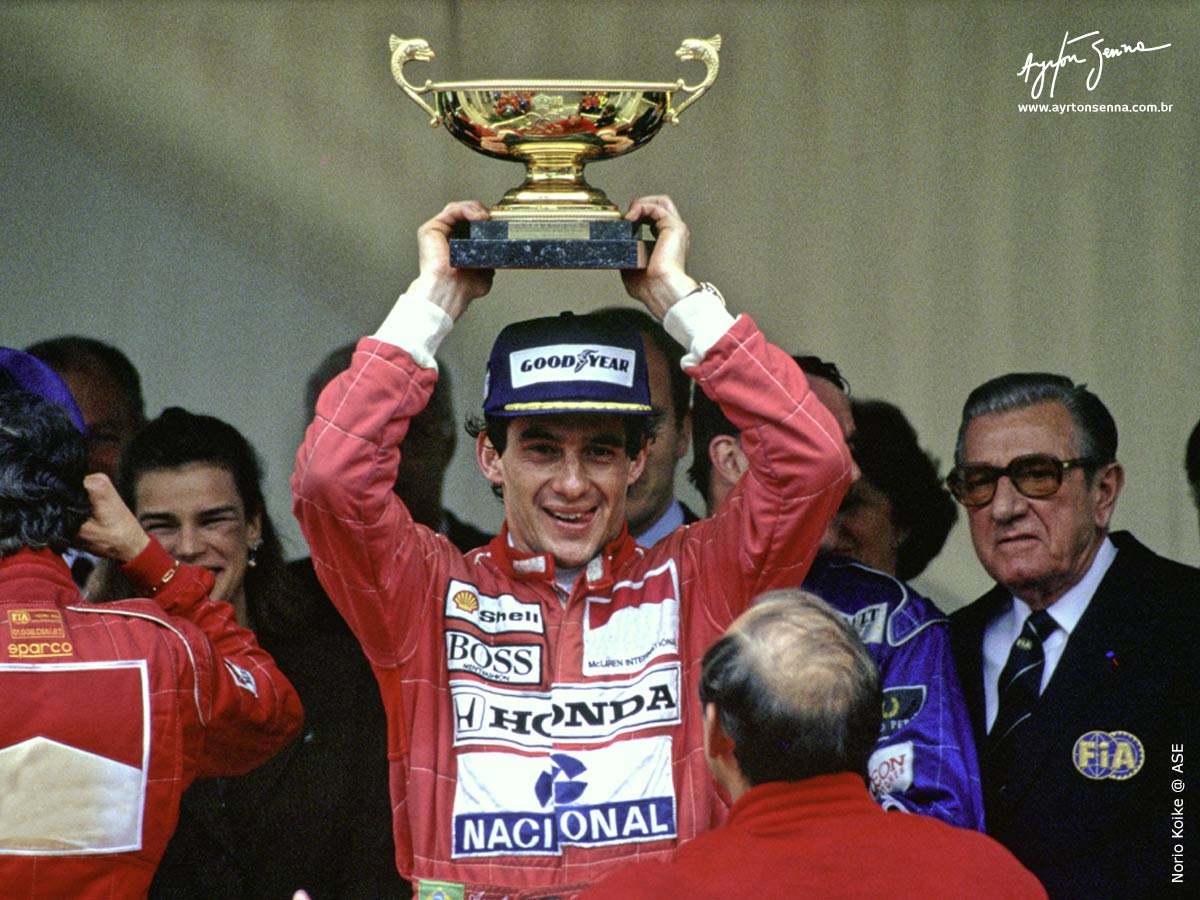

1992 – Duel with the “Lion”
Even after securing four victories in Monaco, in 1992, the Brazilian was far from being the favorite. With Williams dominating F1, Senna only had a car capable of starting in third place on the grid, 1.1 seconds behind Nigel Mansell in qualifying.
Senna made a good start, took second place from Riccardo Patrese, but McLaren lacked the pace to catch the Williams. Luck favored the Brazilian this time: a nut came loose from one of Mansell’s wheels, forcing the Briton to pit. Senna took the lead and Mansell quickly closed the gap, resulting in a thrilling battle, with Ayrton holding off the “Lion” and maintaining the lead until the end.
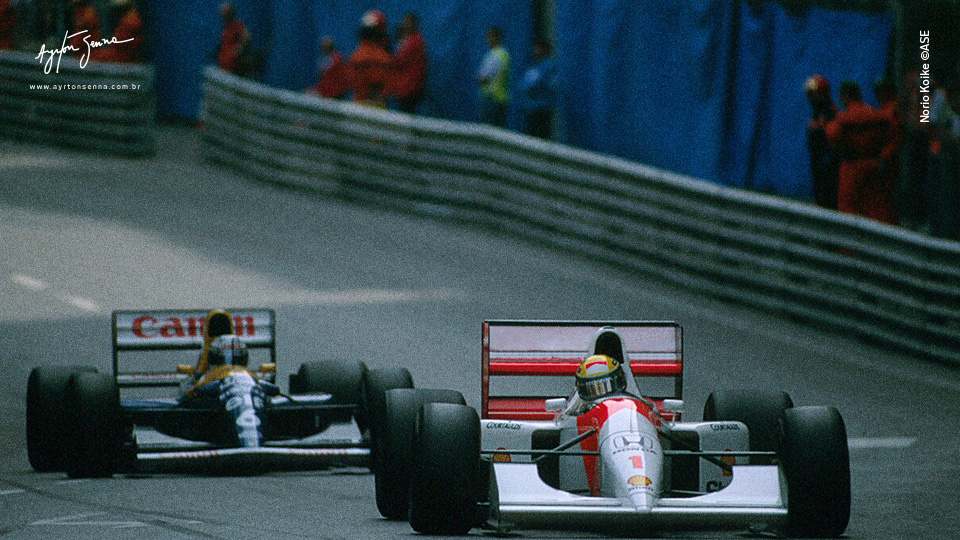

1993 – Historic record
The sixth victory that crowned Ayrton Senna as the King of Monaco also involved improbable situations, akin to the triumph of the previous year. Once again without the best car, Senna started third, behind Alain Prost and Michael Schumacher.
The German from Benetton suffered an engine blowout on lap 33, while the Frenchman was penalized for a jump start. Victory was another testament to Senna’s resilience, especially considering that during Thursday’s practice sessions, he had crashed his McLaren into the guardrail, injuring his hand. With this victory, Senna surpassed Graham Hill, who had five wins in the Principality, becoming the most successful driver in the Monaco GP.
